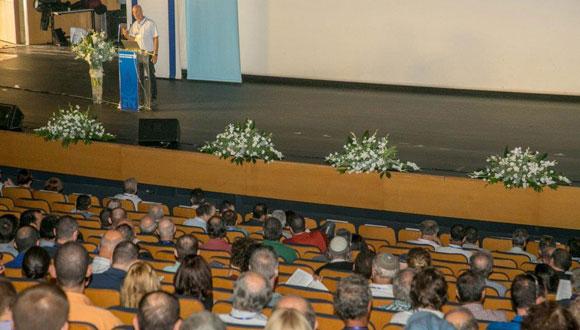Physics Colloquium: Optically-induced electron non-equilibrium in metals – a clash of “modern” and “ancient” science...
Yonatan Sivan, BGU
Zoom: https://tau-ac-il.zoom.us/j/83476132371?pwd=NHZKL0N0ZHFQNFVka3BEaVJhVUI0Zz09
Abstract:
In the last couple of decades, the possibility to push the electrons of metal nanostructures away from thermal equilibrium using light has motivated a series of exciting applications, culminating in claims for societal impact, such as curing cancer and mediating global warming. These claims, however, were also a source of confusion and hot debates. My talk would be aimed at resolving this debate via rigorous modelling and re-evaluation of some of the most inspiring experimental studies recently performed, those that the promises above were based on.
Specifically, I will start by presenting a self-consistent theory of the electron distribution in metals under continuous-wave illumination which treats, for the first time, both thermal and non-thermal effects on the same footing. I will show that the number of non-thermal electrons (i.e., the deviation from thermal equilibrium) is very small, so that the power that ends up generating these non-thermal electrons is many orders of magnitude smaller than the amount of power that leads to mere heating [1]. I will then review (unintentional...) quantitative confirmations of our theory based on quantum transport measurements [2].
Then, I shall discuss reports of observation of nonthermal electrons in two classes of experiments. First, I will review our (unfortunately discouraging...) re-interpretation of the exciting claims on the possibility to enhance chemical reactions with non-thermal electrons from metals as pure thermal effects (i.e., “ancient” 19th century science) [3], showing that in many cases, the role of thermal effects was grossly underestimated due to a long series of quite incredible conceptual and technical errors in earlier work by leading groups. Then, I will show that non-thermal electrons do manifest themselves in metal photoluminescence experiments (with both continuous-wave and pulsed illumination), explain why they sometime “look” like thermal carriers and resolve several decade-long disagreements in the literature [4].
References:
[1] Dubi & Sivan, Light: Science & Applications 8, 89 (2019).
[2] Reddy et al. Science (2020); Dubi, Un & Sivan, Nano Letters 22, 2127 (2022).
[3] Sivan, Un, Dubi, Baraban, Science (6439), eaaw9367 364 (2019); Sivan & Dubi, App. Phys. Lett.: Perspectives 117, 130501 (2020).
[4] Sivan & Dubi, ACS Nano 15, 8724 (2021); Sivan et al., ACS Nano 17, 11439 (2023).
Event Organizer: Dr. Hadas Soifer


